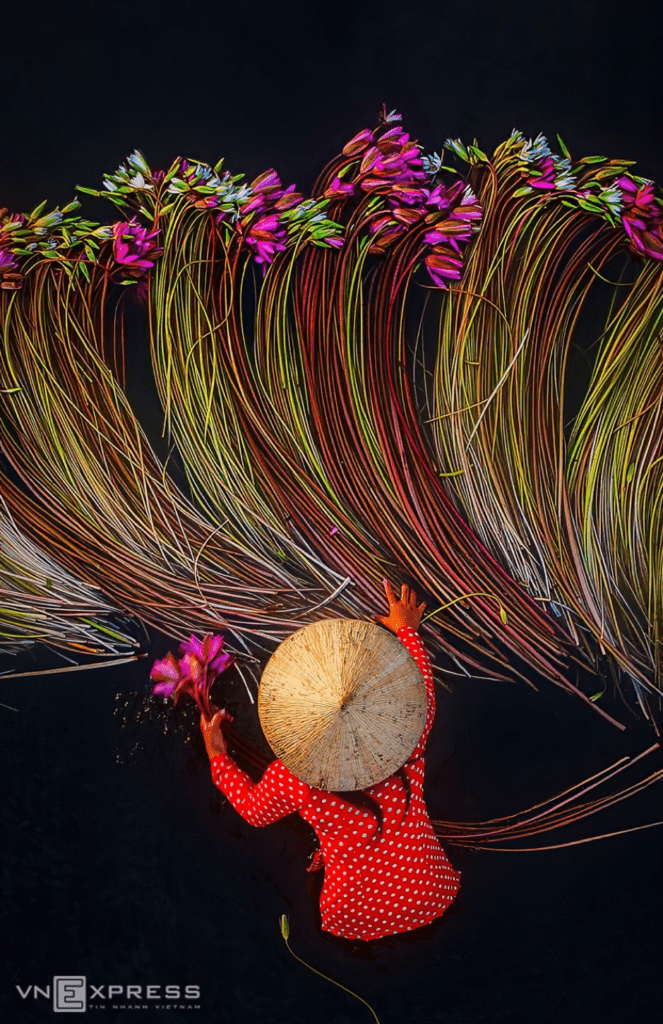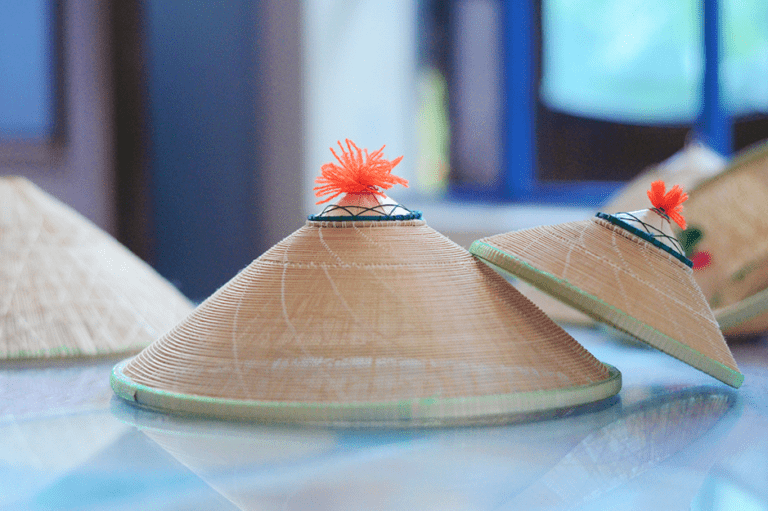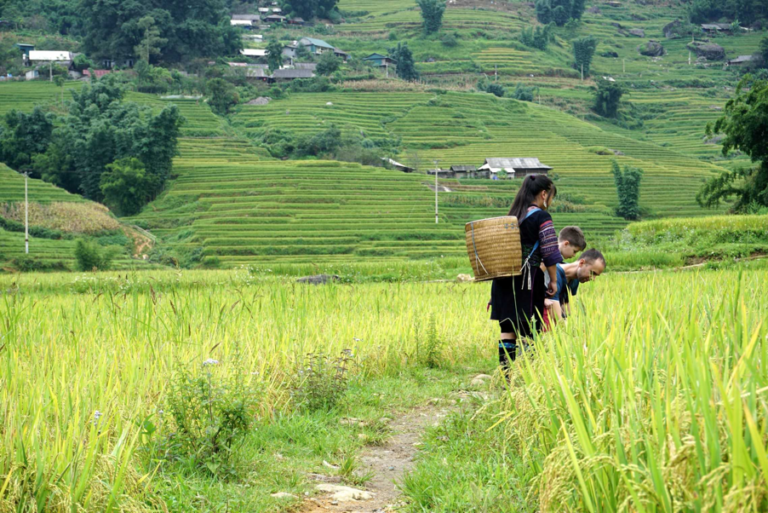Across the S-shaped country, each region highlights its particular beauty, from water rice terraces in Muong Hum, Lao Cai to “năn bộp” fields in Ca Mau.

Water rice terraces create such a picturesque scenery in Muong Hum, Bat Xat, Lao Cai. When the first rains provide a generous water source for the field, it’s time for farmers to start their new crops. Visitors coming to Bat Xat in May and June will be able to see small groups of workers on the field. They are damming up, leading buffaloes, meanwhile other groups are transplanting rice. That creates bustling atmosphere on the rice terraces.
This picture above is in the album “Sắc màu miền quê Việt Nam” (The color of Vietnamese rural villages) by Pham Huy Trung, who is living and working in Ho Chi Minh city. That creating various photo albums about rural areas, cities, and nature is the photographer’s contribution to promoting Vietnam’s tourism and encouraging Vietnamese people to travel inland.

A lady is taking care of flowers. The photo was taken in Tay Tuu village, about 20 km to the west of Hanoi city center. In 2017, this village was recognized and honored as a traditional craft village in Hanoi. The flower village covers an area of over 200 hectares, it is one of the main flower suppliers for the city and surrounding areas. Locals grow flowers year-round, but mostly on the Lunar New Year, with popular varieties such as roses, daisies, lilies, dahlia, or Transvaal daisies.

The subsistence rhythms of life on the Quang Loi Lagoon, Quang Dien district, Thua Thien Hue in the colorful dawn scenery. This lagoon belongs to the Tam Giang lagoon system, about 30 km away from Hue City. The fishermen here live almost their life on a boat, they consider it as home and make end meets based on water currents.

The lush green glass paddy was taken in a rural area in Quang Nam.

The peaceful view of the country with an image of a farmer raising ducks in a flooded field in the suburbs of Quang Nam.

The mangrove forest in Ca Cai lagoon, located in Binh Thuan Commune, Binh Son District, about 40 km to the northeast of Quang Ngai City when Lumnitzera Racemosa Willd trees (in Vietnamese: “cây cóc trắng”) are in budding season. The tree, which is a small wooden species, is planted to create a protection zone to prevent waves and improve the ecological environment.

After harvesting crops, locals pump water into the fields to raise ducks. Nearby, there is a kapok tree, which is familiar to rural areas in Phan Rang, Ninh Thuan.

A woman is washing water lilies to get rid of mud, after harvesting in flooded fields in Kien Tuong, Long An. The flooding season in Southwest Vietnam occurs from July to December, brings life to lotuses and water lilies.

The subsistence rhythms in flooding season in the sunset in Moc Hoa, Long An.

A herd of buffalo is crossing the flooded field in the afternoon in Tan An, Long An.

Catching fishes in Tha La flooded field, Vinh Te Commune, Chau Doc city, An Giang. This place is one of the first provinces to receive floods, then to other provinces in the Mekong Delta.

A local is harvesting “năn bộp” (Eleocharis dulcis) in the countryside of Ca Mau. This type of grass thrives well in the rainy season. People enjoy the soft part of the grass raw with dipping sauces, in a hot pot, or stir-fried it with small shrimps. Nowadays, “năn bộp” trees are grown widely in many Southwest provinces namely An Giang, Dong Thap, Soc Trang, Bac Lieu, and Ca Mau.
Tourists coming to the Southwest region will have chances to experience the local lifestyle like catching fishes, picking water morning glories, harvesting water lilies, “điên điển” flowers or “năn bộp”. Such simple activities remind Vietnamese people of their beloved homeland, especially when they have been away from home for a long time.


